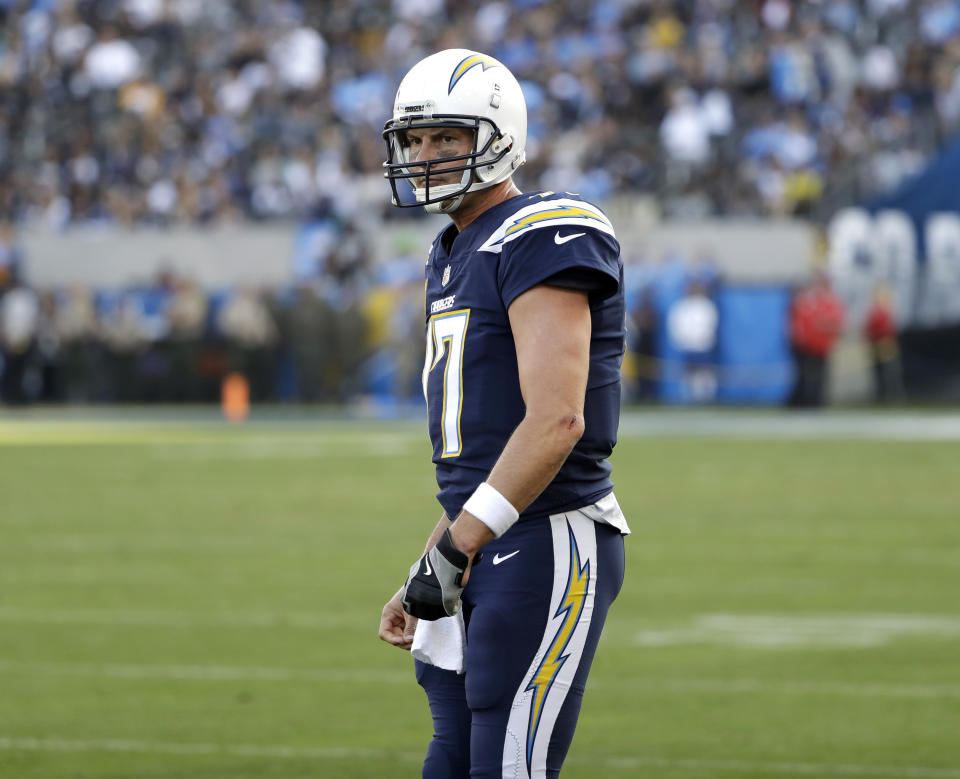Fantasy QB season preview: Searching for draft values at a deep position

Let’s see if we can mine the fantasy quarterback class for some bargains.
We’re looking at three things: How teams fare in air yards, how they convert air yards into passing yards and the pass percentage of the most highly leveraged plays (inside the opponents’ 10-yard-line ).
The NFL average pass length is 8.2 yards and on average 87% of air yards result in passing yards. So assuming for 550 attempts, the average QB compiles 4,510 air yards and nets from that 3,924 actual passing yards. We obviously want QBs who are likely, by combining above-average performance in these metrics, to beat that average.
[Yahoo Fantasy Football leagues are open: Sign up now for free]
The third stat is perhaps the most important. NFL teams throw 50.5% of the time at the opponents 10-yard-line or closer to the goal. We’ve included sacks as pass plays. Just over a third of these pass plays last year (33.5%) resulted in touchdown strikes — 345 total (about 11 “easy” TD passes per team).
Out of these three stats, we created an index of these stats and sorted by the highest combined rank. Finally, we determined if the team/QB’s offensive system has changed. The foundational belief here is that quarterback performance in these areas is largely driven by play-calling and play design. Here are the recommendations on who to draft relative to current Yahoo ADP ranking among QBs (more important than the draft slot since there is such wide variance for when leagues draft QBs).
Philip Rivers (QB16): He’s tied for third in the index but effectively second since Arizona has a new coordinator/system. (If a team promoted a coach from the prior staff for a departing coordinator, we counted that as keeping the same system.) Rivers is 14th in air yards and ninth in converting them into yards. So he’s just one small uptick in each from leading the league in passing yards. And his receiving corps is super deep with Mike Williams, last year’s seventh overall pick, now added to the mix off a season lost to injury. The one worry here is that the Chargers defense may be so dominant that it could suppress Rivers’ volume substantially. Los Angeles has impact players at every level and probably the best secondary in football. But if any team should just go pedal to the metal and feel no lead is every safe enough, it’s the Chargers. They have been so unlucky in blowing leads that they should just try to kill everyone and leave no doubt. San Diego was surprisingly 10th in pass percentage near the goal-line. I think this holds because Melvin Gordon is not efficient enough to demand the ball in these situations.
Ben Roethlisberger (QB12): Roethlisberger is the upside play here. He is just so explosive in this offense. He has the top receiver, arguable top running back and, in my opinion, the best No. 2 receiver in football. So, jackpot. Remember, he threw for 500 yards twice last year — against the Ravens and Jaguars for cryin’ out loud. Maybe he’s on the wrong side of the mountain, but I’m not worried. And the home/road disparity is an issue but only because he’s so awesome at home (20.5 points per game vs. a still good 14.7 on the road, which ranked 14th among QBs). There’s a new offense but the Steelers promoted the QB coach from last year’s staff. And the one major difference is reportedly giving Roethlisberger more flexibility to audible, hopefully into more easy passing TDs near the goal line.
Matthew Stafford (QB11): Notice how you can wait at QB. If your league drafts two (more on the frequency of this using Yahoo historical data closer to draft season), you can easily get two of these recommendations back-to-back in middle rounds. But we generally recommend only drafting one QB in a one QB league. Stafford was actually the top player in the combined metrics last year: 17th in air yards per attempt, sixth in rate of conversion and sixth in pass percentage in close. He’s listed third here because he’s most expensive (though still inexpensive). Those stats last year earned Stafford a QB7 finish. He has a dynamic and versatile WR corps and one of the best receiving running backs in football. Offensive coordinator Jim Bob Cooter returns. Stafford is probably not going to be QB1 because he doesn’t run but he’s a solid bet to beat ADP and could lead the NFL in passing yards. Stafford is rock solid and cheap.
One QB has a chance to rise far above his current rank according to this data, but you have to project him into a new offense. So the bet here is that it’s not the skill level of the quarterback that we wager on but more the coaching and play-calling. This approach is reasonable but trendy because of the success it had last year, especially with the Rams.
Mitchell Trubisky (QB25) had as bad a setup as you can imagine last year but now gets the Eagles offense, which tied for ninth in our index. (But again, was this primary a function of the Eagles QB talent?) Can Trubisky throw as aggressively downfield as Carson Wentz and will the passing opportunities in close be similar? I seriously doubt the former as Trubisky’s arm is below NFL average, according to Ourlad’s velocity readings at his combine. But he is athletic and could get on the edge like Wentz and make plays. He has a chance to be a top 12 QB. A big rise in Trubisky’s production is not likely, it’s maybe 40% or so, but that’s way more likely than that ADP suggests.

 Yahoo Sports
Yahoo Sports 
